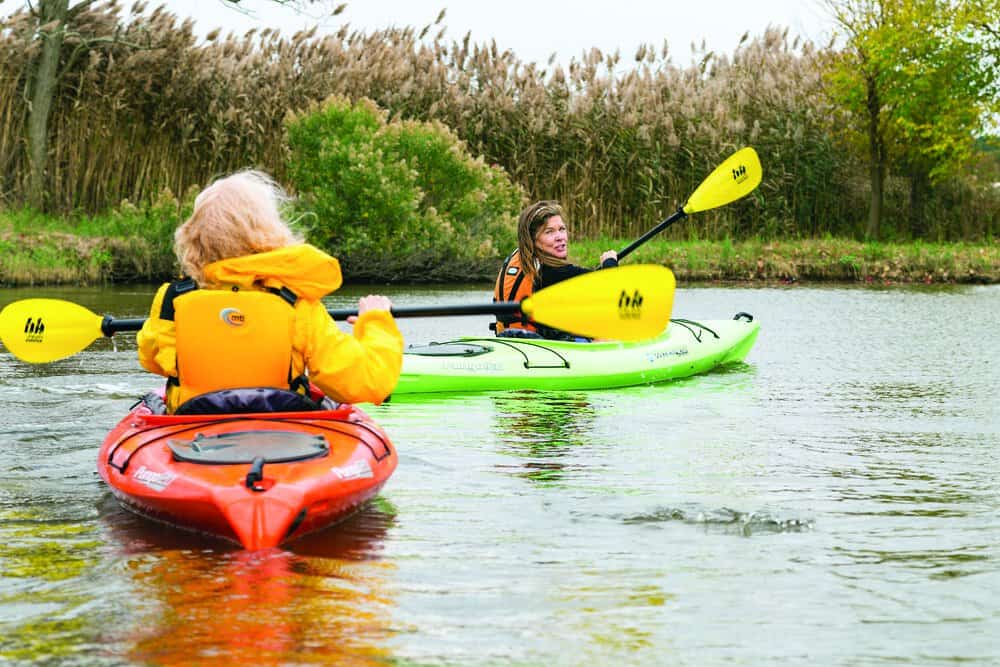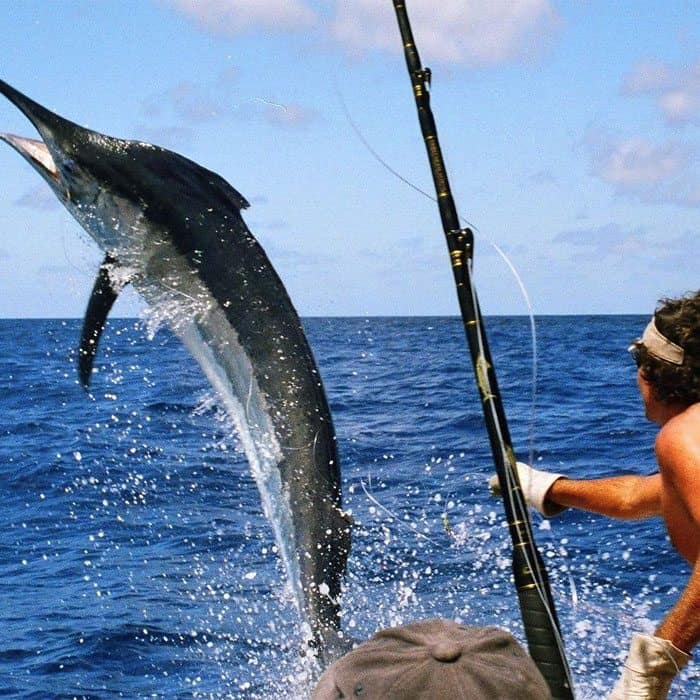Our species rarely considers itself prey—a pity really. It’s a perspective I’d recommend if you visit Blackwater National Wildlife Refuge. For instance at the moment, temporarily adrift on the Little Blackwater River, I’m profoundly thankful I’m not a fish. Or a smallish duck. Or some other morsel that might catch the eye of the bald eagle pivoting directly above my head. Instead, I can lean back in my conspicuously orange kayak and watch the big bird soar through a steel-gray sky and be secure in the knowledge that I won’t become lunch.
Two nearby mallards seem less at ease in the raptor’s presence. Squawking, they flee from a stand of marsh grass. Meanwhile, four higher-soaring eagles discomfit other ducks hiding deep within the marsh. Only minutes after launching from a cove on the outskirts of this sprawling sanctuary—the oldest and largest federal wildlife refuge in Maryland—I’ve already spotted more eagles than visitors could have seen in a week 40 years ago. Good news for the once-endangered eagles and those of us who marvel in their presence. For the ducks, maybe not so much.
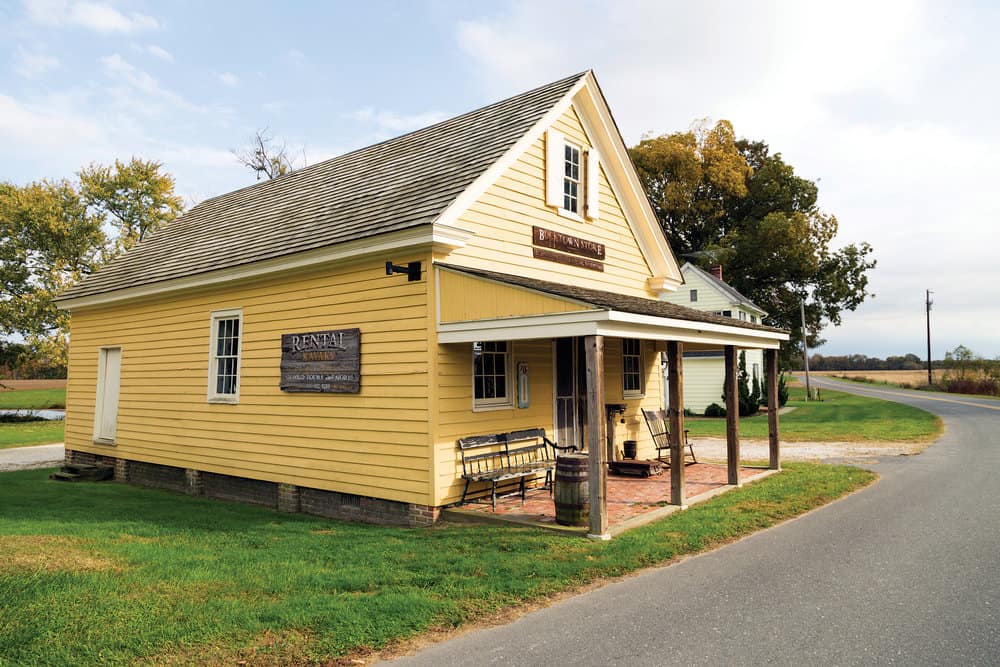
On a blustery October day when the phragmites bow like feathery footmen in the wind, I’m paddling this marshy neighborhood during its greatest influx of visitors—those of the avian variety. For the annual fall/winter migration some 35,000 geese and upwards of 15,000 ducks will lay over at the refuge to gorge on corn and millet (planted expressly for their consumption) and dabble in freshwater impoundments flooded seasonally for their use. Resident bald eagles—more than 100 pairs nest here in Dorchester County now—will be joined by their migrating northern cousins. Soon, tundra swans from Canada will show up, too. Ospreys have decamped, but egrets, herons and passers-through such as northern harriers and marsh hawks will take their place.
All freely inhabit a landscape that was far less hospitable a century ago, when wild birds were hunted as commercial commodities and few jurisdictions saw fit to protect them. It took an unlikely coalition of early 20th-century socialites, naturalists and sportsmen to reverse the birds’ declining fortunes and ultimately help establish today’s wildlife refuge system. Raptor cams make fuzzy-nest voyeurs of us all, but I submit that refuges and their history offer a visceral view of the tooth-and-claw struggle to save species and habitats.
Spying no easy meal, my eagle departs up the Little Blackwater. I’d best do likewise or I’ll never catch up with my paddling guide in this stiff headwind. Dorchester is the Eastern Shore’s largest county. One quarter of it resembles the territory we’re exploring today: endless wetlands that are sparsely settled, uncommonly wild and indelibly beautiful. Even experienced paddlers could lose their way on the serpentine, grass-shrouded Blackwater and Little Blackwater rivers, which flow through the refuge, and the creeks, ponds and tidal marshes that stitch together the area’s complex estuarine environment. All told, Dorchester has more than 1,900 miles of shoreline and nearly 800 miles of streams.
“Even if I go out every day, I’ll never paddle them all,” says my guide, Susan Meredith, who cherishes the place generations of her family have called home. Descended from Chicamacomico Indians, part of the Nanticoke tribe, Meredith and her husband, Jay, operate Blackwater Paddle and Pedal, an outfitter and guide service situated on the edge of the refuge. Susan, who fairly bounces with energy even while standing still, has guided kayakers on the Choptank River and lesser-known local waterways like the Little Blackwater for 12 years. I’ve visited Blackwater refuge numerous times, but this is my first foray by water. I’ll say this: its panoramic, aptly named Wildlife Drive can’t compare to enjoying a duck’s-eye view of this secluded kingdom.
Considered one of Maryland’s most ecologically valuable and culturally significant rivers, the Blackwater begins where Parsons and Coursey creeks merge in northwestern Dorchester. It flows east-southeast through swampland and forest, soaking up tannins that darken its waters and account for its name. The Little Blackwater River is the largest of several tributaries. From its headwaters near Cambridge, the Little Blackwater corkscrews southward, meandering more than a dozen times before joining the main river (a.k.a. the Big Blackwater) in the heart of the refuge at an expanse of drowned river channel known as Lake Blackwater.
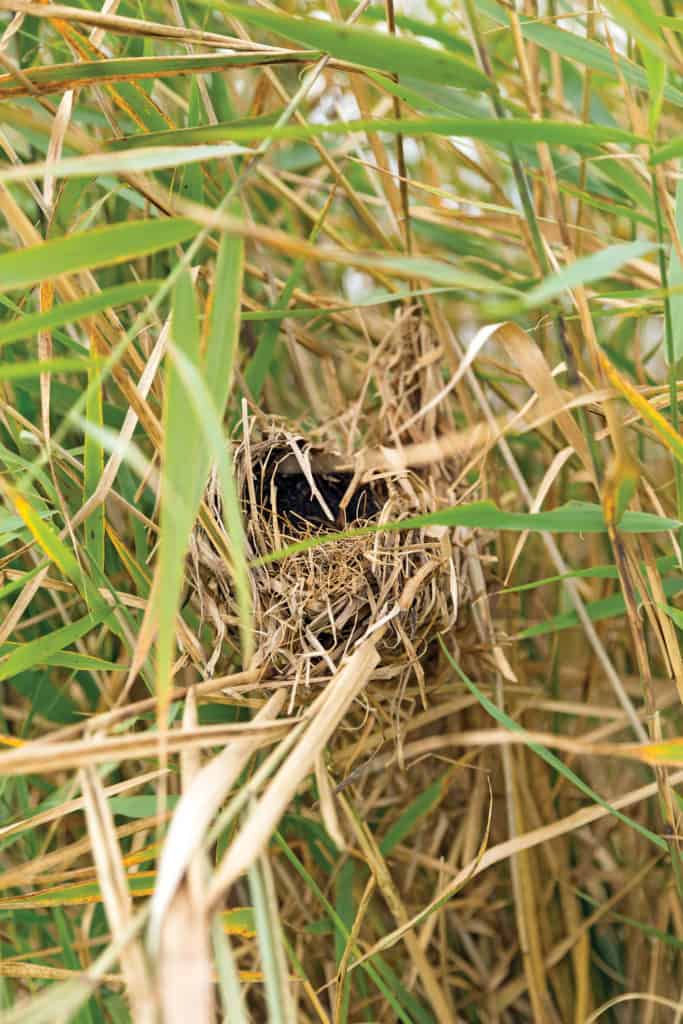
Susan and I push upriver accompanied by flotillas of ducks, mostly mallards and teals (some 20 duck species frequent the refuge.) The Little Blackwater is slightly brackish here, influenced by tidal flow from Fishing Bay, into which the main river empties. Beyond the lower marshes lining both sides of the channel I glimpse farmland scarcely exceeding sea level and forests slowly retreating from the salt water’s reach. Red maples and ash trees predominate these days, but the woods used to abound with oaks as well, harvested in centuries past for shipbuilding or felled when woodlands were cleared for cropland, mainly tobacco, flax and corn. This is Harriet Tubman territory. The Underground Railroad leader was raised on a nearby plantation and is thought to have sheltered fleeing slaves among these marshes.
We point our kayaks toward a cove where loblolly pines—surely Blackwater’s official tree—crowd the shoreline, intermixed with dull red- and yellow-leaved maples, slender bare sycamores, and holly trees brimming with scarlet berries. Susan says the plentiful berries, plus an early start to this year’s migration, foretell a cold winter (an accurate prediction as it turns out). We paddle close by a massive uprooted tree, its eight-foot-tall root ball resting inches above the water. Rising water levels have slowly undermined the lower river’s forests, increasing salinity, saturating soils and eventually toppling trees.
Susan points out two bald eagles’ nests in the pines, one relatively new and thus smaller, the other a McMansion aerie of long standing. Several years ago, she says, she guided U.S. Army Corps of Engineers employees to the site of a gigantic eagles’ nest on the Little Blackwater. They calculated it was the size of a VW bug and weighed as much as a ton. The species’ population has risen steadily since 1980, seven years after the deadly pesticide DDT was banned. A single-day survey at the refuge in January 2015 recorded a 55 percent increase in nesting birds from 2014 and the highest-ever non-roost count, 207 eagles, including three golden eagles.
The refuge boasts an impressive 250-plus bird species. One of them, a killdeer, flies off as we approach a mudflat it was fitfully probing for food. Susan tells me monarch butterflies like to rest here in warmer weather. A small parting in the nearby marsh grass reveals a mud-lined nest, its occupants departed for the season. In addition to protected species such as American bald eagles and golden eagles, numerous watch-listed breeding species live in Blackwater’s brackish and saltwater marshes, including black rails, saltmarsh sparrows, least bitterns, king rails, common moorhens and seaside sparrows. The National Audubon Society deems southern Dorchester one of Maryland’s most important bird conservation areas.
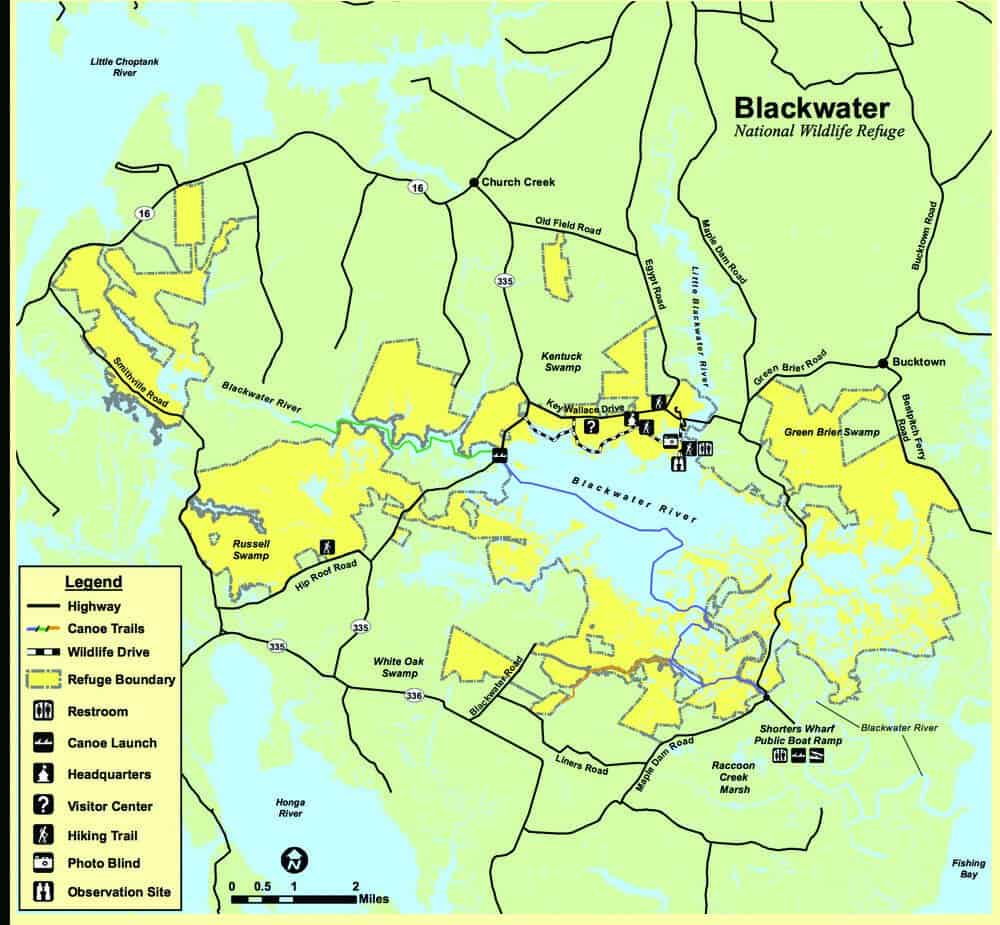
Sad to say, our cultural and political priorities did not always include bird protection. By the early 20th century, many species—varieties of ducks, geese, egrets and herons included—were overhunted to near extinction to satisfy the demands of women’s fashion and urban palates. Stylish ladies of the era favored elaborately feathered hats featuring a panoply of plumes, from hummingbirds’ to snowy egrets’. And in the finest restaurants of the day, gourmands dined lavishly on ducks and other wildfowl.
To meet growing demand, some commercial hunters developed deadly arsenals and dastardly ways of killing large numbers of birds. In Florida’s Everglades, plume hunters wiped out entire snowy egret rookeries by shooting adult birds and leaving their offspring to starve. On Chesapeake Bay, unscrupulous duck gunners hunted by night (when birds are reluctant to fly), spotlighting flocks and blasting away with weapons custom-built for slaughter. There was little to stop them. Maryland didn’t require hunting licenses then. Seasons were long, bag limits lax at best and fines minimal.
William (Bill) Giese, a retired Blackwater refuge employee and a student of local history, says that while he’s seen no historical accounts of plume hunting in the area, commercial duck hunting was a profitable local industry that spawned grisly excesses. “A punt gun was a large-caliber, black-powder-type weapon they loaded with nails or shot,” he explains of the market gunners’ weapon of mass destruction. “They put a big light on the front of the boat, which didn’t really worry the ducks. When they got close enough the birds would raise their heads. They’d pretty much shoot them at head height.”
Wildfowl hunting for sport has always been a Maryland birthright. My male counterpart on the Little Blackwater a century ago might have hunkered in a sneakbox or similar shallow-draft hunting boat camouflaged with marsh grass. Instead of my two-bladed paddle he’d have wielded a double-barrel shotgun. His prey probably fed family and friends, “locavores” who lived off the land. But too many wildfowl, killed by greedy restaurant-market gunners or affluent out-of-town hunters, wound up on fancy dinner plates in Baltimore, Washington and Philadelphia. By 1912, one of Maryland’s most beautiful inhabitants, the wood duck, was nearly extinct.
“How has it come to pass that Maryland lacks more good wildlife laws than any other state in the Union except North Carolina?” wrote New York Zoo director William T. Hornaday in his 1913 conservation call to arms, Our Vanishing Wild Life, Its Extermination and Preservation. “Of the really fundamental protective laws, embracing the list that to every self-respecting state seems indispensable, Maryland has almost none save certain bag-limit laws!” To top it off, Hornaday noted, the state legislature had just repealed a law that banned the use of powerboats in wildfowl hunting. “A step ten years backward,” Hornaday howled. “Maryland should be ashamed of it!”
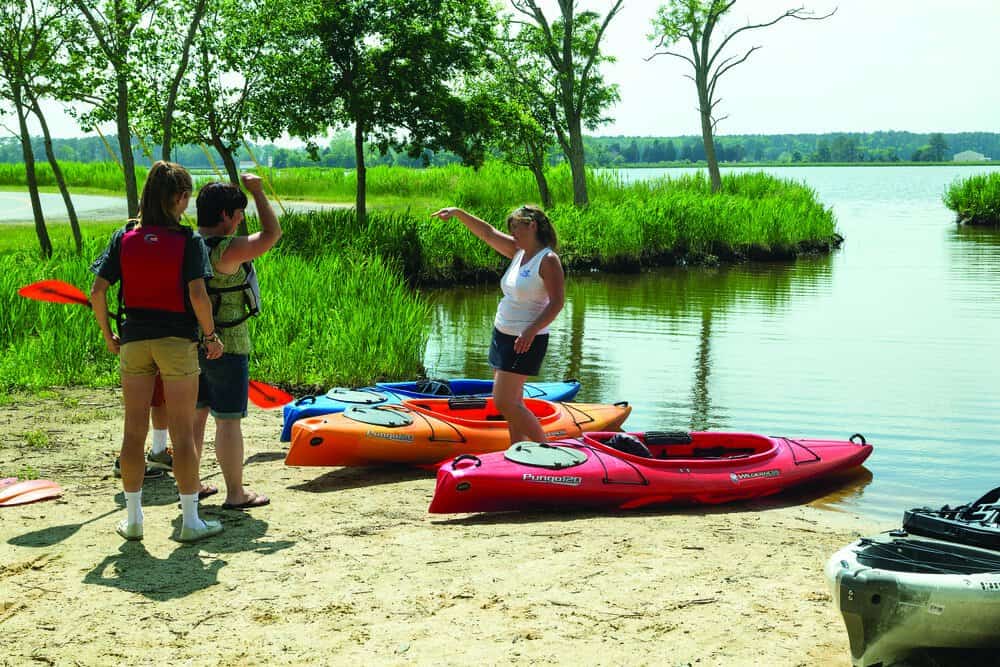
In the end, shame worked. Beginning with a klatch of Boston society ladies who conspired over tea to make feathered millinery a fashion no-no, the public rallied to protect migratory birds and other wildlife. Sportsmen’s clubs condemned commercial hunting practices, instituting their own rules for sustainable hunting. The state of New York took steps to shut down New York City’s lucrative feather market. Congress passed the Lacey Act in 1900 prohibiting interstate shipment of species killed in violation of state laws and followed up 18 years later with legislation that closed loopholes exploited in states that failed to
protect wildlife.
In 1903, President Theodore Roosevelt established the first national wildlife preserve at Pelican Island in Florida. More than 550 federal refuges eventually followed, including a former commercial muskrat farm along the Blackwater River purchased by the U.S. government in 1932. A year later it became the Blackwater National Wildlife Refuge.
“This has always been a big stop on the flyway for waterfowl so it was pretty much a no-brainer to set this area aside,” says Ranger Tom Miller, a 15-year refuge employee. “We started with about 8,300 or 8,400 acres and we’re up to over 28,000 now.” The preserve comprises roughly equal portions of open water, marshland and forest, including several islands in the Chesapeake Bay.
More than 80,000 people visit annually, but the refuge is managed primarily for birds and beasts. All recreational activities must be wildlife oriented, and from October 1 to April 1 portions of the refuge are closed to humans in order to accommodate migrating birds. As a result, where once birds were shot, baited or poisoned they now thrive. In addition to abundant migrating waterfowl, Blackwater boasts the second-highest breeding population of bald eagles on the East Coast, topped only by Florida.
“Truthfully it’s probably what we’re better known for now than waterfowl,” Miller says. “I think for a long time people were almost comfortable with the fact they’d never see a bald eagle anywhere in the wild because they were so scarce. With their resurgence people are realizing they can come out here and see them.” Blackwater’s eagle festival in March draws thousands of bird-lovers annually.
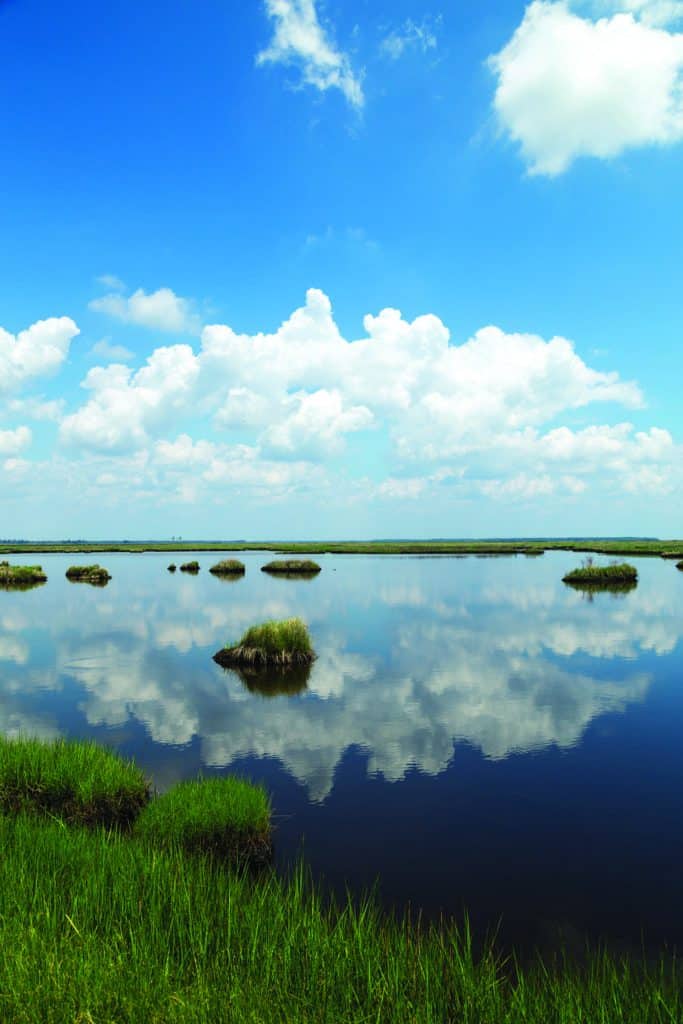
While most visitors flock to Wildlife Drive, a scenic five-mile auto and bicycle route, a growing number use the refuge’s water trails. Mapped with assistance from the Friends of Blackwater, a nonprofit fund-raising/support group, this trio of color-coded suggested routes winds through marshes where paddlers can spot eagles, ospreys, egrets, shallow-water ducks, sika deer (a small Asian elk) and river otters (see “If You Go” page 63).
I’m not paddling an official trail, but a stretch of the Little Blackwater Susan prefers for its solitude, wildlife and scenery, such as the marshy point toward which we’re heading. Its lush grasses sprout a lonely stand of loblollies in various stages of health. Overhead, ever-thickening cloudbanks appear low enough to brush the tops of the gangly trees.
Much of the river still lies ahead, but with this cold front approaching we decide to reverse course. As the wind pushes us briskly homeward, Susan chats about her family’s penchant for rescuing and rehabbing things. Like wild critters, among them a skunk and a squirrel she named Don King for its white head tuft, and old buildings, including a centuries-old store with historical connections
to Tubman.
Nearly two hours after departing we’re back at our launch site adjacent to the outfitters’ low cinderblock building. Just downriver lies Lake Blackwater, the 4,000-acre floodplain that’s silently stalking southern Dorchester. Even refuges, it seems, aren’t immune to predators.
Once marshland, the island-studded “lake” formed gradually as sea level rose and land subsided, a process accelerated in the last century by nutria, an imported South American fur-bearing rodent with the munchies for marsh roots (the U.S. Fish & Wildlife Service, which manages the refuge, was able to virtually eliminate the animals about a decade ago).
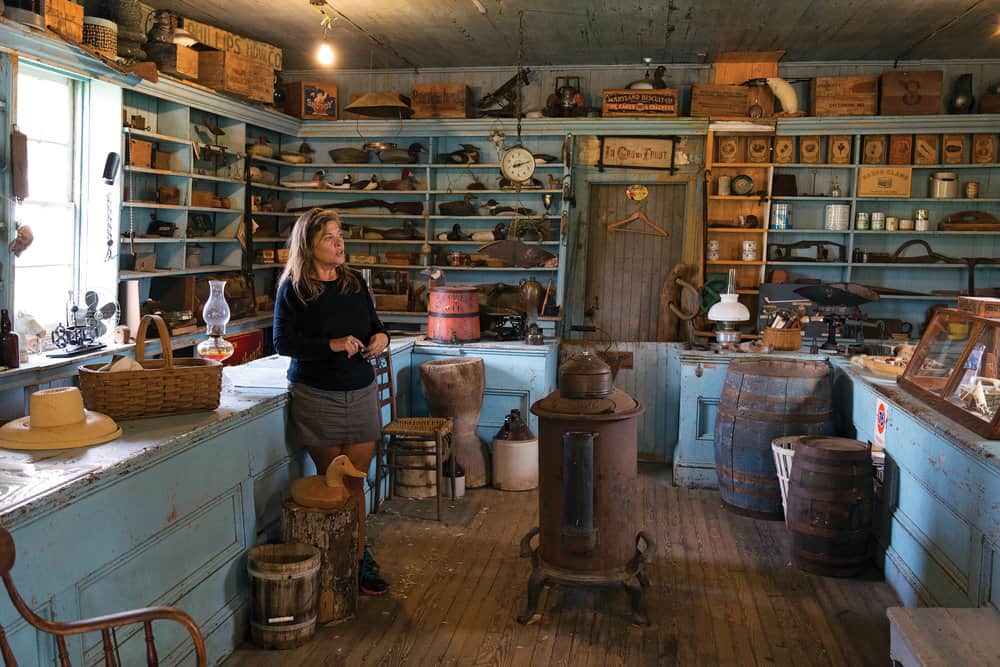
“We put a lot of blame, and rightly so, on nutria, but I think a lot of that damage was accelerated because of the large number of geese we had,” says Bill Giese, who grew up near the refuge where he worked for 40 years managing natural resources. He theorizes that in the late 1940s and early 1950s, the introduction of mechanical corn harvesters allowed local farmers to plant more grain, which attracted geese accustomed to migrating farther south. “The food source came here and the geese started short-stopping.” By the 1960s, more than 100,000 Canada geese were overwintering at Blackwater, tramping down mudflats where nutria had demolished native grasses and creating hollows that filled with salty water at high tide. “The salt water evaporates and salinity eventually builds up. It wouldn’t allow vegetation to come back,” Giese says. “It’s a vicious cycle.”
Between 1938 and 2006, the refuge lost over 5,000 acres of marsh to open water, according to Blackwater 2100, a grim 2013 report by the Conservation Fund that outlines strategies for confronting salt marsh decline. Using a predictive model with the ominous acronym S.L.A.M.M. (Sea Level Affecting Marshes Model), the report postulates southern Dorchester (including the refuge) will be largely under water by the end of the century.
“There’s not going to be much left of us if their predictions are true,” says Friends of Blackwater president Rick Abend, who owns land near Parsons Creek, as far upstream as one can get. “When I first went down there [45 years ago] the trees were alive. They’re just stems now. And we’re seeing more and more high tides.”
Many locals believe habitat changes occur cyclically and don’t foretell environmental disaster. Scientists see things differently, but agree to a point: As the encroaching Chesapeake claims marshland in the lower Blackwater, it does transform old forests into new wetlands in the upper watershed. Man’s challenge—a considerable, perhaps insurmountable one—is to foster enough marshy migration corridors to outpace Blackwater’s lake-ification and keep the refuge above water.
Century’s end is a ways off. Informed science, motivated citizenry and natural resiliency have defied doom before. Witness the wood ducks, snowy egrets and bald eagles at Blackwater National Wildlife Refuge, a haven of hope for the birds and an eye-opening paradise for paddlers.

